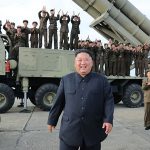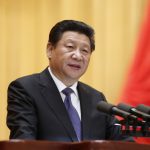The US is showing positive signs on the ongoing trade talks with China, which is beneficial to yielding a good outcome during next month’s APEC summit in Chile. But experts warn it is unwise to assume that the US won’t scrap progress that has been made.
The 2019 APEC Economic Leaders’ Meeting will be held in Santiago, Chile from November 16-17.
According to a statement released by the office of the US Trade Representative (USTR) on Monday (US time), the trade agency will commence on Friday a process for considering an extension for up to 12 months certain exclusions from additional tariffs on Chinese imports that were granted last December and are set to expire on December 28 this year.
The period for submitting comments will run from Friday to November 30, said the statement.
In December 2018, at the request of US importers, the USTR granted nearly 1,000 product exclusion requests from tariffs that went into effect on July 6 on approximately $34 billion worth of imports from China.
“US importers and companies have felt genuine harm due to the year-long trade war. I think the tariff suspension is likely to be extended after the hearing, given the current upward and positive trend, toward which both China and the US are making further efforts,” said Li Yong, deputy chair of the expert committee of the China Association of International Trade.
US President Donald Trump said on Monday that he expected to sign a significant part of the trade deal with China “ahead of schedule” but did not elaborate on the timing, Reuters reported.
Team members will make continuous and stepped-up efforts on the trade consultations, said Geng Shuang, a spokesperson for the Foreign Ministry, in response to media questions as to whether the deal would be signed ahead of schedule during Tuesday’s press conference.
“Both chief negotiators of the Chinese and US sides for the trade talks will hold a phone call in the near future,” said Geng.
Top leaders of the world’s two largest countries are working to agree on the text for a phase-one trade deal, which was announced by Trump on October 11 during the latest China-US high-level trade talks in Washington.
During Saturday’s phone call, the two sides agreed to appropriately address each other’s core concerns, and confirmed that the technical consultations on part of the text of the agreement have been basically completed, according to the Xinhua News Agency. It was the first time for the Chinese side to signal that a partial agreement may be within reach.
“Given the current progress, both sides have sent out positive signals, a development that helps create favorable conditions for the upcoming summit,” Li told the Global Times on Tuesday.
The Trump administration announced a delay on plans to raise tariffs on $250 billion worth of Chinese goods to 30 percent, a move that was set to take effect from October 15. But for the December 15 tariff hike on $156 billion worth of Chinese goods, including cellphones, laptop computers and toys, no decision has been made, according to media reports.
“I think the current trade negotiations are better described as ‘kind interaction’ rather than ‘compromise’. The difference is that the former refers to a win-win result, while the latter means sacrificing one’s interests,” Gao Lingyun, an expert at the Chinese Academy of Social Sciences, a think tank, told the Global Times Tuesday.
“In terms of signing the phase-one deal, we should still maintain a cautious and discreet attitude since it is possible that the US might scrap any progress that has been made,” Gao noted.
China’s Ministry of Commerce has emphasized that the US must remove all additional tariffs in order for the two countries to reach a final agreement on trade.
[Cover Image: GT]



